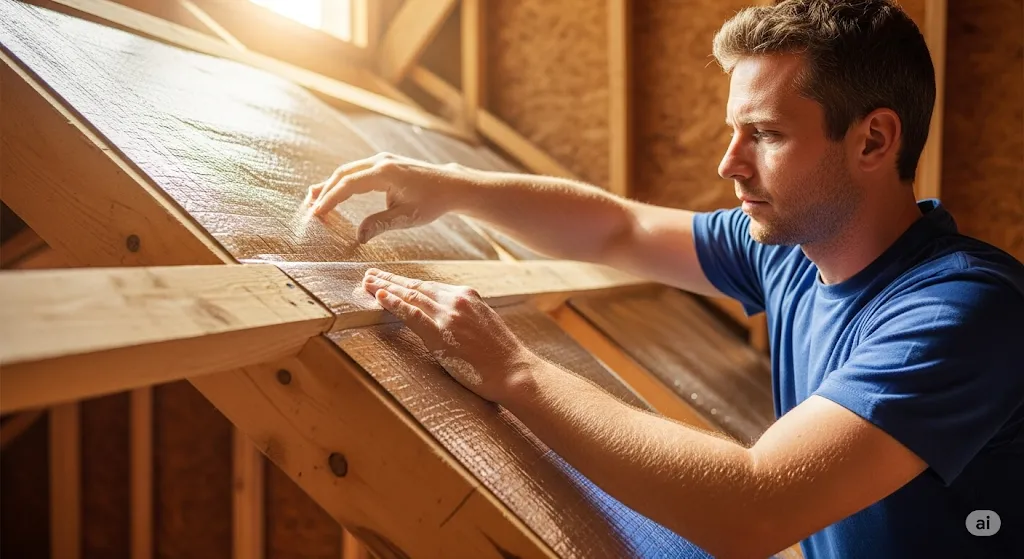
Radiant Barrier: How It Works, Benefits & Best Uses
You probably don’t think much about your attic, but here’s the thing: if your home bakes in the sun, you’re paying for it in higher AC bills and sweaty summer afternoons. Radiant barriers are a simple solution that can make a real difference.
Let’s break it down.
What Is a Radiant Barrier?
A radiant barrier is a type of insulation—usually a shiny, reflective sheet of material like aluminum foil—installed in your attic, right under the roof. Its main job is to reflect radiant heat away from your home, so less heat sneaks into your living spaces. Instead of absorbing heat like traditional insulation, a radiant barrier bounces it back toward the roof and out of your house.
How Does a Radiant Barrier Work?
Most of the heat that enters your attic comes from the sun’s rays hitting your roof. That heat radiates down into your attic and eventually into your home, raising indoor temps and putting your air conditioning to work.
Here’s how a radiant barrier changes the game:
The shiny surface reflects up to 97% of radiant heat.
Less heat gets into your attic, which means your home stays cooler.
Your AC runs less, so you save on energy bills.
It’s as simple as that.

Types of Radiant Barriers
There are a few options out there, but most fall into these main categories:
Foil-backed sheets: Flexible rolls of foil that go over rafters or under the roof deck.
Radiant barrier panels: Plywood or OSB with foil facing, installed during new construction.
Spray-on coatings: Less common, but sometimes used in hard-to-reach places.
If you’re retrofitting an attic, foil rolls or sheets are the most common pick.
Benefits of Using a Radiant Barrier
Lower Energy Bills: Reflecting heat means your AC does less work—expect real savings in warm climates.
Cooler Attic and Living Spaces: Your whole house stays more comfortable, even on the hottest days.
Helps Existing Insulation Work Better: Radiant barriers work alongside your current insulation, not instead of it.
Can Boost Home Value: Energy efficiency is always a plus for buyers.
Lightweight and Low-Maintenance: Once it’s in, you don’t need to mess with it.
How to Choose the Right Radiant Barrier
Don’t overthink it. Here’s what to keep in mind:
Climate: Radiant barriers are best for hot, sunny regions.
Attic Access: More open space makes installation easier.
Material Quality: Look for durable, tear-resistant foil.
DIY or Pro: Handy homeowners can install rolls or sheets, but larger attics or tricky jobs may be best for a pro.
Installation Tips
Install with the shiny side facing an open air space—that’s how it reflects heat.
Make sure there’s proper attic ventilation. This helps the radiant barrier work as intended.
Staple or tape sheets to rafters for best results.
Avoid crushing or covering the barrier with other insulation.
Always follow the manufacturer’s instructions for best performance.
Common Mistakes to Avoid
Blocking attic vents (heat needs somewhere to go)
Laying radiant barrier flat on insulation—it must face an air space
Using in cold climates, where benefits are limited
Buying cheap, easy-to-tear products that won’t last
FAQs
Is a radiant barrier the same as regular insulation?
No. Regular insulation slows heat transfer, but a radiant barrier reflects radiant heat away.
Does it work in cold climates?
It’s most effective in hot, sunny places. If you live where winters are long and cold, stick with traditional insulation.
Can I install it myself?
If you’re comfortable working in your attic, sure. Just watch your step, use safety gear, and don’t block vents.
Conclusion
Radiant barriers aren’t magic, but they do make a big difference—especially if your AC never seems to keep up with the summer heat. If you want a cooler, more efficient home without major remodeling, this is a smart place to start.
If you want a quote, advice, or just a straight answer, contact us here or email [email protected]. We’re happy to help—no pressure, just honest answers.